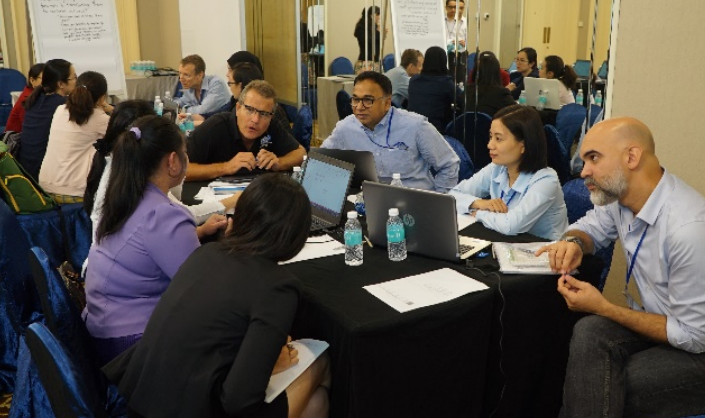28 AUG 2018
S2S, Long-range Forecasting
Summary of the 2nd Workshop on Subseasonal to Seasonal Prediction for Southeast Asia (S2S-SEA II)

NMHSs participants, trainers, and end-users of the S2S-SEA II Workshop.
Introduction
Meteorological Service Singapore as host of the ASEAN Specialised Meteorological Centre (ASMC) organised a 5-day workshop on Subseasonal to Seasonal Prediction for Southeast Asia (S2S-SEA II) from 13 to 17 August 2018. This training workshop is the second in the series of workshops aimed at building capability in subseasonal to seasonal predictions (2-week to 2-month timescale) among NMHSs in Southeast Asia. The Workshop involved two participants each from 8 of the NMHSs, namely Indonesia, Lao PDR, Malaysia, Myanmar, Philippines, Singapore, Thailand, and Vietnam.
The Workshop was conducted in collaboration with the WMO S2S Prediction Project, International Research Institute for Climate and Society (IRI), and RIMES. Funding for the Workshop was provided by ASMC and the United Nations Economic and Social Commission for Asia and the Pacific (UN ESCAP).
Activities
Participants at the Workshop assessed model performance on weekly/biweekly time periods for rainfall-related climate indices such as the number of dry days or number of days above or below certain percentile thresholds of their interests. Participants also explored using statistical techniques to correct for biases in the models, or “Model Output Statistics”, to improve the S2S model performance in the region using the IRI’s Climate Predictability Tool (CPT). These activities, developed based on feedback from participants of the first workshop in March 2017, are a progression from the standard weekly mean temperature and rainfall anomalies analysed during the first workshop.
Another new aspect of the workshop was the involvement of users, AHA Centre, GWP-SEA, RIMES, and UN ESCAP in a 1-day plenary to consolidate and present results from the Workshop, discuss the outputs with the users and explore how these could be useful for various applications.Overall, what we have learnt will be useful for our job. Now we ourselves can explore developing some model outputs or tools for fortnightly or monthly predictions. – Ms. Nichanun Trachow, Thai Meteorological Department.

Participants discussing on the requirements of end users and the challenges and opportunities of using the S2S model output in applications.
A short write-up of the workshop I and II is also available on the 10th S2S newsletter of the S2S Prediction Project. Back